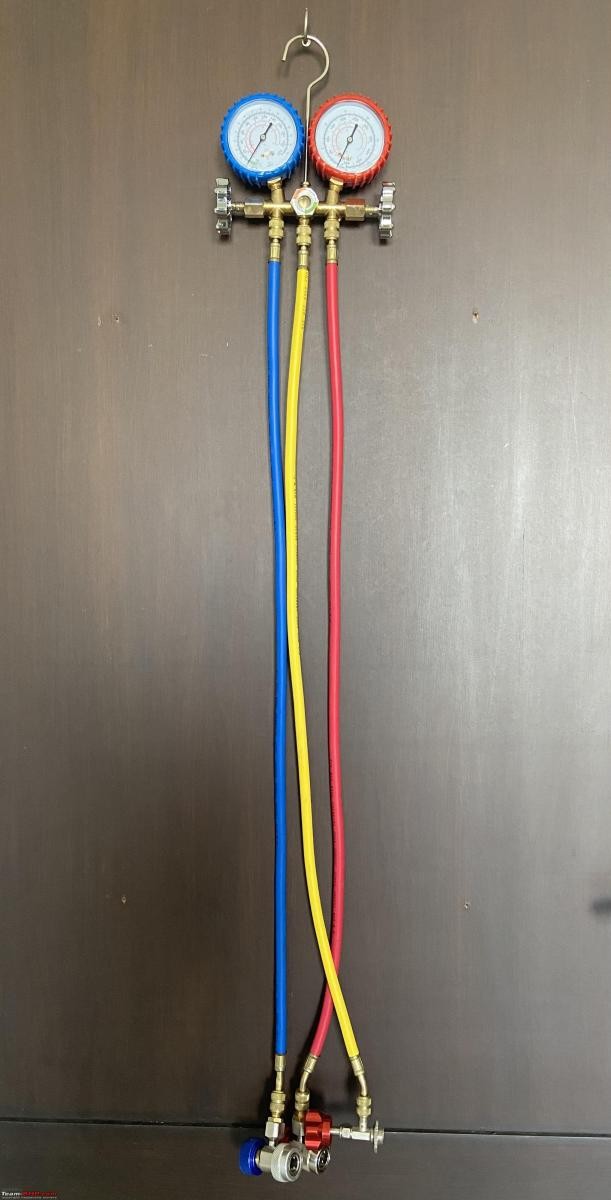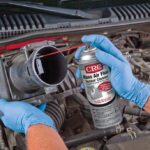Is your car’s AC blowing warm air? A common culprit, especially in older vehicles, is low refrigerant. This comprehensive guide provides a step-by-step approach to charging your car’s AC system with R-134a refrigerant, restoring its cooling power. This process is relatively simple if your system is low on refrigerant and there are no other underlying issues.
Identifying the Problem: Is Low Refrigerant the Culprit?
Before charging your AC, it’s crucial to ensure low refrigerant is the actual problem. Here’s a checklist of components to inspect:
- Compressor: Listen for the characteristic “click” when engaging the AC. Visually inspect the drive belt for damage or slippage.
- Evaporator: Check the footwell for water accumulation indicating a clogged drain. Inspect for frosting in the cabin air filter cavity.
- Condenser: Examine the condenser fins for dirt or debris buildup. Regular cleaning with compressed air is recommended.
- Expansion Valve: Located outside the firewall, this component is less accessible for visual inspection but should be considered as a potential issue.
- Blower: Verify functionality across all speed settings. Inconsistent blower speed may point to a resistor problem.
- Cabin Air Filter: A dirty filter restricts airflow. Replace if necessary.
If these components seem to be working correctly, low refrigerant is likely the cause of reduced cooling performance. A hissing sound from the vents can also indicate a refrigerant leak.
 AC Manifold Setup
AC Manifold Setup
Gathering the Necessary Tools and Materials for Charging AC in Car
You’ll need the following:
- AC Manifold Gauge Set: This tool measures pressure in the system and allows for refrigerant charging.
- R-134a Refrigerant Can: Check the sticker in your engine bay for the correct refrigerant type and quantity. A 450g can is typically sufficient for a hatchback.
- Thermometer: A digital multimeter with a temperature probe or a separate probe thermometer is needed to measure air temperature.
- Safety Goggles and Nitrile Gloves: Refrigerant contact can cause frostbite.
Understanding the AC Manifold Gauge Set
The manifold gauge set is essential for Charging Ac In Car. It consists of:
- Pressure Gauges: Blue for low pressure (LP) and red for high pressure (HP).
- Hoses: Color-coded blue (LP), red (HP), and yellow (charging).
- Quick Couplers: Blue (LP) and red (HP) for connecting to the car’s AC ports.
- Piercing Valve: For connecting to the refrigerant can.
Step-by-Step Guide to Charging Your Car’s AC
-
Initial Temperature Measurement: Start the engine, set the AC to maximum cooling, and measure the vent temperature.
-
Connecting the Manifold Gauge Set: Attach the LP and HP quick couplers to their corresponding ports on the car’s AC system.
-
Checking Pressure Readings: With the engine running at 1500 RPM, observe the pressure readings on the gauges. Compare these readings to the R-134a pressure-temperature chart for your ambient temperature.
-
Charging the System: Open the LP valve on the manifold in short bursts, allowing refrigerant to enter the system. Monitor the HP gauge and stop charging when the pressure reaches the recommended level according to the temperature chart.
-
Verifying Cooling Performance: Measure the vent temperature again. You should observe a significant decrease indicating successful charging.
Important Considerations When Charging AC in Car
- Safety First: Always wear safety goggles and gloves when handling refrigerant.
- Purge Air from the Yellow Hose: Before charging, release a small amount of refrigerant from the yellow hose to remove air.
- Avoid Overcharging: Adding too much refrigerant can damage the system. Refer to the pressure-temperature chart and charge in short bursts.
- Seek Professional Help if Needed: If you encounter difficulties or suspect other issues, consult a qualified AC technician.
This DIY guide provides a basic understanding of charging ac in car. However, remember that AC systems are complex. If you are unsure about any step, consult a professional. Proper maintenance and timely refrigerant top-ups can significantly extend the life of your car’s AC system and ensure comfortable driving in warm weather.

